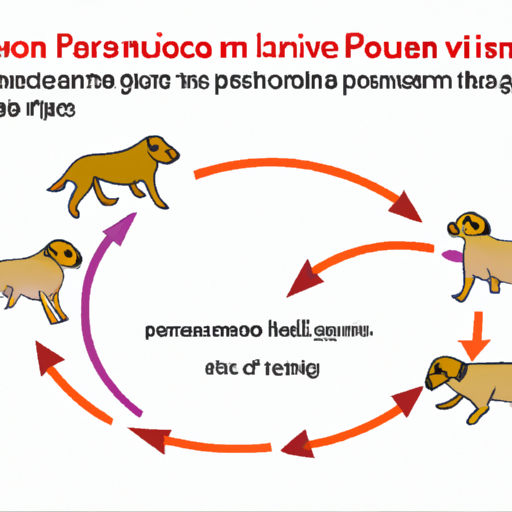Parvovirus, commonly referred to as ‘parvo’, is a highly infectious viral disease that can have severe consequences for our canine friends. As a caregiver, understanding this disease is crucial to protect your beloved pet. This guide will walk you through the key aspects of canine parvovirus, its transmission, prevention, and treatment.
Understanding Parvovirus
Parvovirus is a deadly disease that primarily affects puppies, though it can also affect adult dogs. It primarily targets rapidly dividing cells, such as those in the intestines and bone marrow, causing severe gastrointestinal issues.
Symptoms of parvo include:
- Severe vomiting
- Diarrhea (often bloody)
- Fever
- Lethargy
- Loss of appetite
How Dogs Contract Parvo
Parvovirus is extremely contagious and can be transmitted in several ways. Most commonly, dogs contract the virus through direct contact with an infected dog or its feces. However, the virus is resilient and can survive in the environment for months. Therefore, your dog can get infected by sniffing or licking contaminated objects, surfaces, or people.
Preventing Parvo
Prevention is the best defense against parvovirus. Here’s what you can do:
- Vaccination: Make sure your dog is up-to-date with its vaccinations. Puppies should receive their first vaccination at 6-8 weeks of age and follow-up shots every 3 weeks until they’re 16 weeks old.
- Hygiene: Regularly clean and disinfect your dog’s living area and items.
- Avoidance: Keep your puppy away from public places and unvaccinated dogs until they’ve completed their vaccination series.
Treating Parvo
If you suspect your dog has contracted parvo, seek immediate veterinary attention. Early detection and aggressive treatment can significantly improve survival rates.
Treatment primarily involves supportive care to prevent dehydration and secondary infections, and may include:
- Intravenous fluid therapy
- Anti-nausea medications
- Antibiotics
Recovery can take a week or more, and during this time, your dog will need plenty of rest and care.
The Path to Recovery
After your dog has recovered from parvo, it’s essential to continue practicing good hygiene and keeping up-to-date with vaccinations. Remember, your dog can still shed the virus for a few weeks after recovery, so keep them isolated from other dogs during this time.
| Recovery Steps | Description |
|---|---|
| Step 1 | Keep your dog isolated from other dogs for at least a month |
| Step 2 | Regularly clean and disinfect your home to eliminate any lingering virus |
| Step 3 | Monitor your dog’s health closely and visit the vet for regular check-ups |
FAQ
Q: Can humans get parvo from dogs?
A: No, the canine parvovirus cannot infect humans.
Q: Can my dog get parvo if fully vaccinated?
A: While rare, it’s possible. No vaccine is 100% effective. However, vaccinated dogs who do contract the disease usually have milder symptoms.
Q: How long does parvo stay in a dog’s system?
A: After recovery, a dog can continue to shed the virus for approximately 3-4 weeks.
Q: Can a dog survive parvo without treatment?
A: Parvo is a deadly disease. Without treatment, most infected dogs will not survive.
Remember, as a caregiver, your dog’s health is in your hands. Stay informed, stay vigilant, and give your pet the best chance to live a happy, healthy life.



